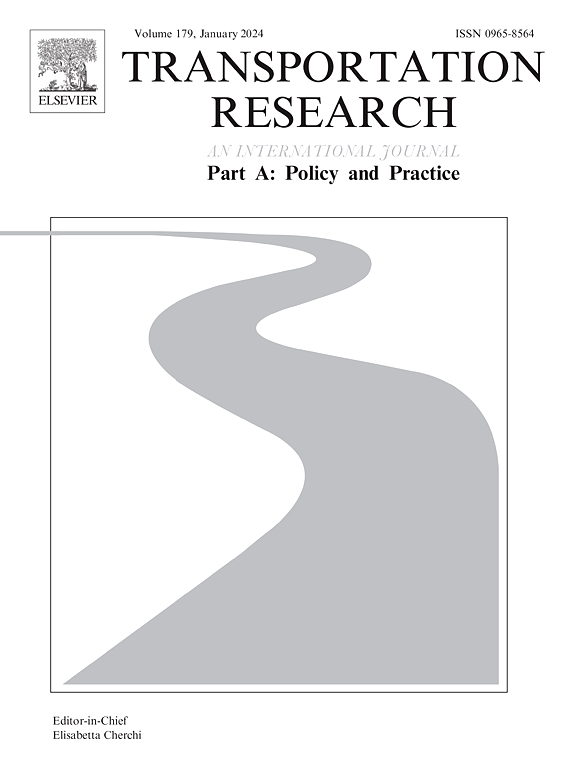Refined high-definition map model for roadside rest area
IF 6.3
1区 工程技术
Q1 ECONOMICS
Transportation Research Part A-Policy and Practice
Pub Date : 2025-03-29
DOI:10.1016/j.tra.2025.104463
引用次数: 0
Abstract
With the rapid advancements in information and communication technology, sensor technology, and artificial intelligence, intelligent vehicles are advancing rapidly, creating new demands for navigation electronic maps. In response to these emerging requirements, high-definition (HD) maps have quickly risen to prominence. However, current HD maps primarily focus on road data and often simplify roadside rest areas (RRAs) into points of interest (POIs), presenting challenges for intelligent vehicles navigating within RRAs. To address these challenges, this paper introduces a refined HD map model specifically tailored for RRA. It categorizes the traffic elements within RRAs into four distinct classes: roads, lanes, markings and signs, and service areas. Each class of elements is thoroughly defined and explained within the proposed map model. In practical RRA scenarios, the proposed map model is visualized and validated using map exchange formats and physical application formats. The introduction of the RRA HD map model not only ensures that vehicles can achieve intelligent driving within RRAs, but also contributes to the establishment of data management platforms for RRAs, providing travellers users with enhanced services.
求助全文
约1分钟内获得全文
求助全文
来源期刊
CiteScore
13.20
自引率
7.80%
发文量
257
审稿时长
9.8 months
期刊介绍:
Transportation Research: Part A contains papers of general interest in all passenger and freight transportation modes: policy analysis, formulation and evaluation; planning; interaction with the political, socioeconomic and physical environment; design, management and evaluation of transportation systems. Topics are approached from any discipline or perspective: economics, engineering, sociology, psychology, etc. Case studies, survey and expository papers are included, as are articles which contribute to unification of the field, or to an understanding of the comparative aspects of different systems. Papers which assess the scope for technological innovation within a social or political framework are also published. The journal is international, and places equal emphasis on the problems of industrialized and non-industrialized regions.
Part A''s aims and scope are complementary to Transportation Research Part B: Methodological, Part C: Emerging Technologies and Part D: Transport and Environment. Part E: Logistics and Transportation Review. Part F: Traffic Psychology and Behaviour. The complete set forms the most cohesive and comprehensive reference of current research in transportation science.

 求助内容:
求助内容: 应助结果提醒方式:
应助结果提醒方式:


